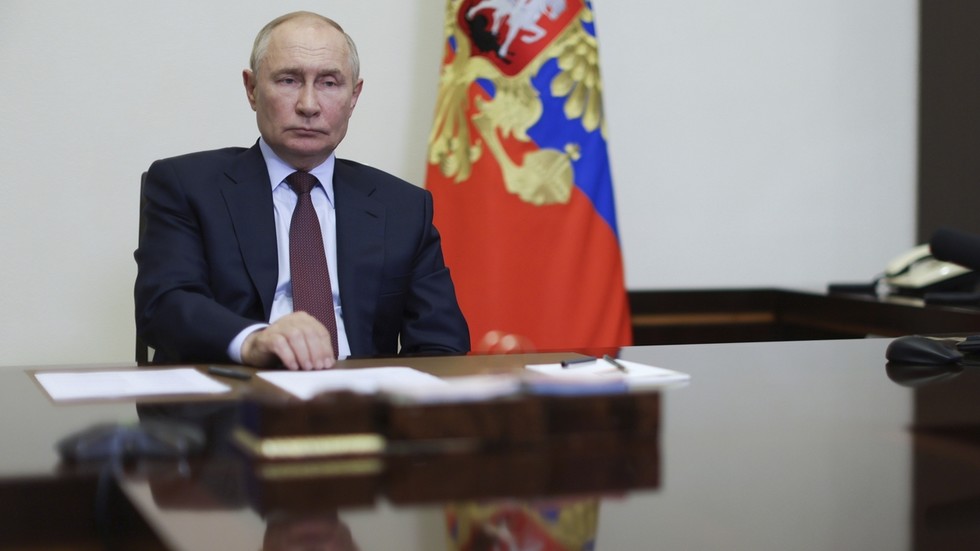Russian and Ukrainian delegations met in Istanbul for the second time in a month on June 2 to explore the possibility of a ceasefire. The talks lasted just over an hour and, once again, produced no meaningful progress. As with the May 16 negotiations, both sides claimed they had laid the groundwork for prisoner exchanges. But despite Ukraine’s offer to hold another meeting before the end of June, a deep and unbridgeable divide remains between Kyiv and Moscow.
More meetings are unlikely to change that. Russia continues to demand Kyiv’s capitulation to the full list of conditions President Vladimir Putin set at the war’s outset: Ukrainian neutrality, a government reshaped to suit Moscow’s interests, and the surrender of the Donetsk, Luhansk, Zaporizhia and Kherson regions. Between the two rounds of talks, Putin even raised the stakes, adding a demand for a “buffer zone” in northern Ukraine.
Kyiv, meanwhile, remains resolute. It refuses to cede any territory and maintains that a full ceasefire along all fronts is a non-negotiable precondition for serious negotiations.
Still, both sides appear prepared to continue the diplomatic charade.
That’s because these talks are not truly about achieving peace or securing a lasting bilateral agreement. Neither side is genuinely negotiating with the other. Instead, both are using the forum to send messages to the United States – and to Donald Trump, in particular.
This dynamic persists despite Trump’s recent efforts to distance himself from the war he once claimed he could end within 24 hours of returning to the White House. That shift in rhetoric has been echoed by key figures in his administration. Vice President JD Vance and Secretary of State Marco Rubio, who just six months ago represented opposite ends of the Republican spectrum on Ukraine – with Vance nearly endorsing surrender to Putin, and Rubio among the Senate’s most vocal Ukraine hawks – have both signalled that Trump’s White House is no longer interested in mediating the conflict. Reflecting that disengagement, there was no high-level prenegotiation meeting between US and Ukrainian officials in Turkiye ahead of the latest talks, unlike those held in May.
Yet despite Rubio’s apparent reversal – likely intended to align with Trump – Ukraine still enjoys broad support in the US Senate, including from senior Republicans. A bipartisan bill aimed at codifying existing sanctions on Russia and imposing new ones – thereby limiting Trump’s power to roll them back – has garnered 81 Senate co-sponsors. The bill’s authors, Senators Lindsey Graham (R–South Carolina) and Richard Blumenthal (D-Connecticut), recently travelled to Kyiv to reaffirm their backing. Graham has suggested the bill could move forward in the coming weeks.
Still, Ukraine knows the bill stands little chance in the House of Representatives without Trump’s blessing. Despite Trump’s enduring animosity towards Ukrainian President Volodymyr Zelenskyy, Kyiv has recently adopted a more deferential posture, particularly after their disastrous February meeting in Washington. The Ukrainian government quickly signed and ratified the so-called “minerals deal” that Trump demanded last month. A subsequent meeting between the two leaders – held on the sidelines of Pope Francis’s funeral – was notably more productive.
So far, Kyiv’s strategy of appeasement has yielded little change in Trump’s approach. While Trump has occasionally hinted at taking a tougher stance on Putin – usually in response to particularly egregious Russian attacks on Ukrainian civilians – he consistently deflects when asked for specifics. For months, he has promised to reveal his plan for Ukraine “in about two weeks,” a vague assurance that remains unfulfilled. A new sanctions package reportedly prepared by his own team over a month ago still sits untouched.
Hoping that mounting battlefield violence or bipartisan pressure from the US Senate might force Trump to act, Kyiv presses on with negotiations. Just one day before the Istanbul talks, Russia launched a record-setting overnight assault on Ukraine, firing more than 430 missiles and drones. Ukraine responded forcefully: on June 1, it conducted a large-scale drone strike deep inside Russia, destroying dozens of military aircraft, including airborne command platforms and nuclear-capable bombers.
Yet these high-profile losses have done little to shift Putin’s strategy. He continues to use the negotiation process as a smokescreen, providing Trump with political cover for his inaction. Meanwhile, Russian forces are advancing, making incremental gains in northern Ukraine’s Sumy region – where they hope to establish a “buffer zone” – and pushing forward on the southwestern Donetsk front.
Ultimately, Ukraine’s ability to strike deep inside Russian territory, including potentially vulnerable targets like oil infrastructure, may have more bearing on the war’s trajectory than any outcome from the Istanbul talks. Yet neither military escalation nor stalled diplomacy seems likely to bring a swift end to the conflict.
Trump says he abhors the civilian toll of this war, even if he stops short of blaming Putin for starting it. But it is Trump’s lack of strategy – his hesitation, his mixed signals, his refusal to lead – that is prolonging the conflict, escalating its brutality and compounding its risks for global stability.
Trump’s advisers may call it “peace through strength,” but what we are witnessing is paralysis through posturing. Russia’s delegation in Istanbul was never a step towards resolution – it was a diplomatic decoy, shielding a brutal military advance. If Trump refuses to back a serious escalation in pressure on Moscow – through expanded sanctions and renewed military aid to Kyiv – he won’t just fail to end the war. He will become complicit in prolonging it. The choice before him is clear: lead with resolve, or let history record that under his watch, weakness spoke louder than peace.
The views expressed in this article are the author’s own and do not necessarily reflect Al Jazeera’s editorial stance.

 1 month ago
11
1 month ago
11










 English (US) ·
English (US) ·